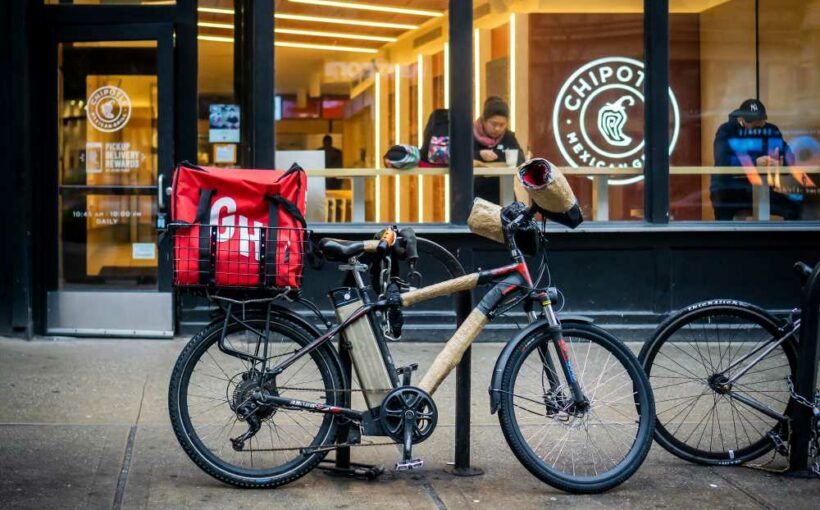More On:
food delivery
Urine luck! NYC bill would force eateries to let delivery workers use bathroom
New fee structure at Doordash could cost customers more
Imperfect Foods wants to make your Earth Day perfect with promo code
Run out of milk? Robots on call for Singapore home deliveries
Food delivery apps like Doordash, GrubHub and Uber Eats got fat off the pandemic to the tune of $19 billion — and now they’re facing a potential crash diet, according to a new report.
The crowded food-app industry had been poised to take a massive hit to its skyrocketing growth in 2020 when sales were slated to rise by just 38 percent compared to a jump of 71 percent in 2019.
But it was saved by coronavirus lockdown orders and fearful diners, according to a study slated to hit research website Social Sciences Research Network on Thursday.
Sales last year surged 122 percent to $51 billion, compared to sales of $23 billion in 2019, as pandemic lockdowns forced people to turn to takeout more often, say researchers Daniel Minh McCarthy, a marketing professor at Emory University’s Goizuita Business School, and Columbia University PhD candidate Elliot Shin Oblander.
But the vast majority of that growth, or 69 percent, came from artificial demand that’s expected to largely evaporate as the pandemic lifts, according to the study, which tracked a total of 27 delivery apps, including GrubHub, Doordash and Uber Eats.
“Wall Street is pricing in so much growth into these companies, but we know that there will be a headwind coming,” McCarthy told The Post of his research.
The study is based on five years of credit card spending data from Earnest Research, a data analytics firm that tracks card spending that culled data on 1.8 million consumers for the report.
McCarthy said the data shows that “when dine-in visits would increase, delivery would decrease on the same day in the same area and vice versa.”
What that means, he says, is that people weren’t eating out more. They were just ordering in more — resulting in “a big transfer of wealth from the restaurants to the delivery companies” that is expected to dissipate this year.
McCarthy is no novice to impactful reports. His research on Wayfair losing money and Blue Apron’s struggles in 2017 was widely cited in the business press.
Some large, publicly traded food delivery apps already appear to be bracing for a slowdown. Doordash in February said it expects total orders for 2021 to grow 33 percent after reporting total order growth of 233 percent for the fourth quarter alone.
“Our outlook anticipates the successful rollout of COVID-19 vaccines, among other things,” the company said at the time. “Though we cannot predict the short or long-term effects this will have on consumer behavior, our guidance assumes it creates headwinds to growth in total orders and average order values.”
Uber on Wednesday introduced a handful of features to better integrate its food-delivery service with its ride-hailing service in an apparent effort to drive demand. Users will be able to pick up food and alcohol while on an Uber trip through a “Pickup and Go” options.
Experts say investors should prepare for the industry’s 2019 woes to return in full force this year, including stock volatility and a rush to consolidate.
Prior to the pandemic, food delivery apps “had all hit a growth wall because the market was over saturated,” said Wedbush analyst Dan Ives. “They knew the only way to compete was to cut costs and to consolidate.”
This year, Ives concluded, “there will be some growth challenges ahead and the food delivery industry will need to adjust to moderated growth.”
So far, however, demand continues to surge. GrubHub on Wednesday said revenue grew by 52 percent in the first quarter, adding to growth of between 41 and 53 percent in its three previous quarters.
Doordash and Uber declined to comment for this article and GrubHub did not respond to a query.
Share this article:
Source: Read Full Article



